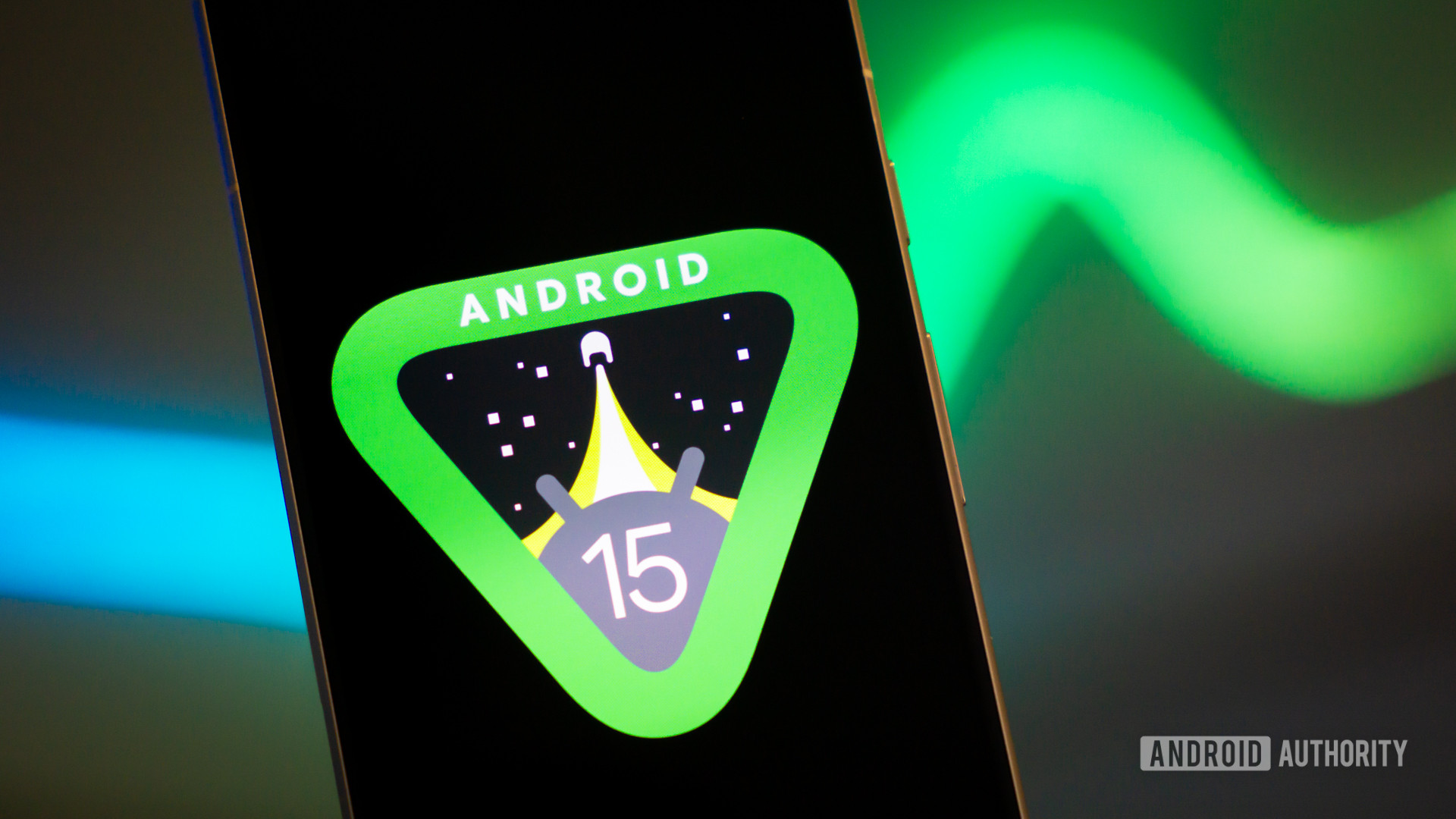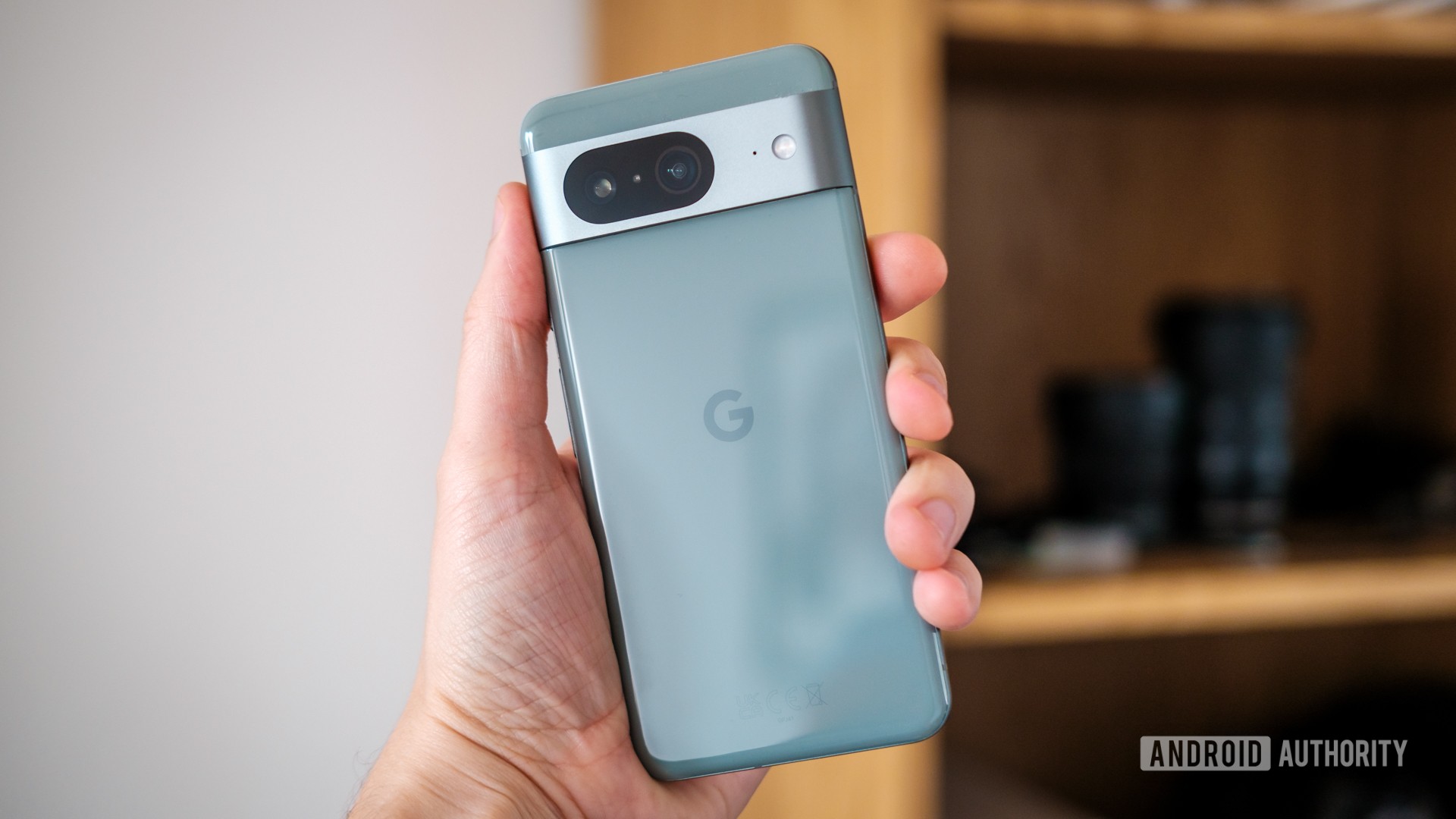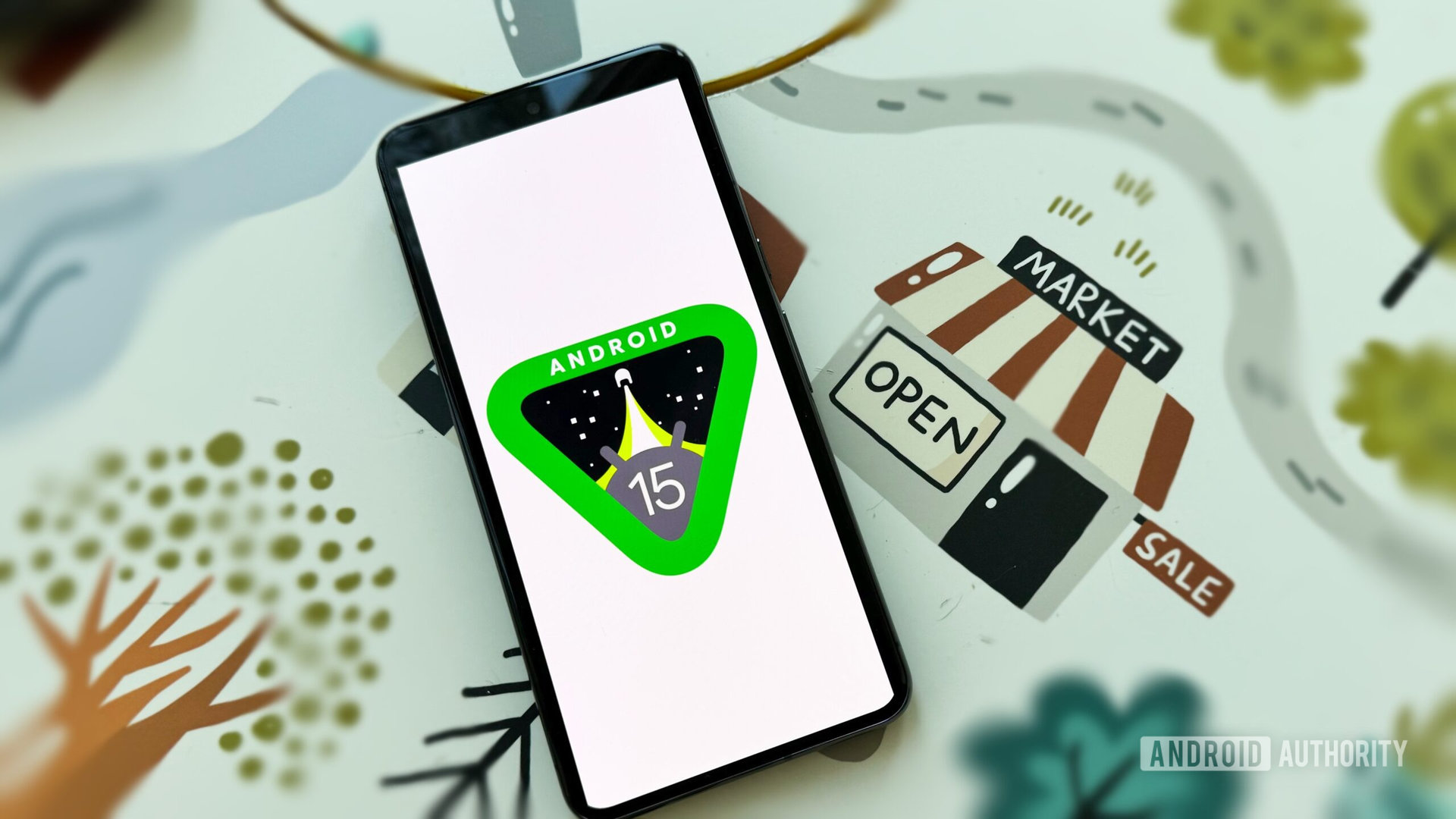How To Install Android 15 On Your Pixel Phone Right Now
We hope you're ready for the next version of Android because Android 15 is finally here. While it will take some time before the software is stable enough for everyday use, that doesn't mean you can't speed it up. Below you'll find instructions for installing the first developer preview of Android 15 on a supported Pixel device.
Warning. As of today, Android 15 DP1 is unstable software and should not be used on your primary phone . There will be many bugs and other problems, and some features you rely on may not work properly, if at all. At this point, we recommend that you only install it on an additional phone, just in case. Proceed at your own risk.
Is it necessary to install Android 15?

Edgar Cervantes/Android Authority
At the moment, the versions of Android 15 that we have are very, very early. Developer previews, as the name suggests, allow developers to test their applications. It is not intended for general users. This early stage of development guarantees that some features will not work at all and serious bugs may occur.
With all this in mind, there are two types of people who should install Android 15 early: developers and Android fans who have access to a Pixel phone or secondary tablet. We strongly recommend that you do not install the developer preview or even the initial beta on a basic Pixel device. It's not worth it.
However, we are not here to stop your passion for Android. Google Tools is open to everyone, so if you're willing to accept the consequences, you can install Android 15 on any device you want.
Which devices can install Android 15 today?

Robert Triggs/Android Authority
Google is offering previews and developer betas for Pixel devices that will eventually see a stable launch. Unfortunately, this means that many older Pixel phones are ineligible to participate in the program, including the Google Pixel 5 and all previous models. The full list of Pixel products that can run Android 15 can be found here:
- Google Pixel 8 Pro
- GooglePixel8
- Google Pixel Fold
- GooglePixel tablet
- Google Pixel 7a
- Google Pixel 7 Pro
- GooglePixel7
- Google Pixel 6a
- Google Pixel 6 Pro
- GooglePixel6
If you don't see your Pixel device in this list, it means you're stuck on Android 14 (or earlier) indefinitely. Note that we expect to see new Pixel devices released before the stable release of Android 15. These devices, including the Google Pixel 8a, should also be able to run Android 15 at launch. We will update the list when these devices become official.
How to install Android 15 DP1?

Adama Sharma / Android Authority
There are three ways to install Android 15. The first is an auxiliary method, which we recommend to almost everyone. It uses the Chrome browser to automate most of the steps, and is convenient if you're upgrading from any version prior to Android 15.
There are also unsupported methods that use ADB and Fastboot. They are more complex, but give you more freedom. These methods are also useful if you already have Android 15 as you will be able to install the latest Android 15 without having to root your phone first.
And remember that in any case the transition from Android 14 to Android 15 requires completely deleting the phone . If you don't want to do that, you shouldn't install Android 15 on your phone.
If you're ready, it's time to prepare.
Get ready to install Android 15.
To get started, you will need the following basic equipment and requirements:
- A computer running Windows, macOS, Chrome OS, or Linux with Internet access and the latest version of the Chrome browser.
- A short, thick USB cable to connect your phone to your computer. The original USB cable that came with your phone is best suited for this purpose.
Before moving on to the next steps, make sure you have everything you need . You don't want to go through the Android 15 installation process and find that you're not ready yet. When you're ready, continue using the assisted or manual installation methods described below.
Install Android 15 using the Helper method
One final warning: this process will unlock the bootloader and completely erase all data on your phone.
- Make sure you have the correct drivers for your phone installed on your computer, which you can get from the Google Pixel drivers page. This is an important step. If you remove it, the flash will not work.
- Connect your phone to your computer using a USB cable.
- In your phone's settings, go to System > Developer Options. If you don't see Developer Options , go to Settings > About phone and scroll down to Build number . Tap Build Number seven times until your phone tells you you're a developer. Developer options should now be available.
- Enable OEM Unlocking and USB Debugging in Developer Options .
- Visit the Android Flash Tool page to install Android 15.
- Select the version of Android 15 you want to install. For some models there is only a 64-bit version and a version that also supports 32-bit software. Both work. If you're not sure which option to choose, choose the one that simply says "(signed)" which supports both 64-bit and 32-bit programs.
- Stay informed because the flashing tool will take care of everything for you. Simply follow the instructions and don't touch your phone unless the flasher specifically asks you to.
Finished. Now you need to install Android 15 on your Pixel smartphone.
Install Android 15 manually
If the simplest help method described above doesn't work for you, you can try manual methods. There are basically two manual methods.
- Flash factory images using Fastboot. This requires an unlocked bootloader, but is the recommended way to update from Android 14 to Android 15 without assistance. Unlocking the bootloader will completely erase your device. Installing Fastboot will erase your device again, but you can change this behavior.
- Download OTA packages via ADB and restore. This method is useful for Pixel devices with a locked bootloader, as well as users who want to preserve their data when updating from Android 15 to Android 15. It is not recommended to use it when updating from Android 14 to Android 15.
Regardless of which method you choose, there are some general steps you need to follow:
- Install ADB on your computer by following our guide. This process also installs Fastboot on your computer since Fastboot is part of the Android SDK platform tools with ADB.
- Make sure USB debugging is enabled on your smartphone.
- On your smartphone, go to Settings > About phone .
- Enter Enter the build number. Click on it seven times. You'll see a pop-up window that says "You are now a developer" or "No, you are already a developer." This means that Developer Options are unlocked on your device and you will see a new entry in the Settings menu.
- Now go to Settings > Developer Options > Enable USB Debugging . Confirm your choice when prompted by the warning.
- Make sure you have the correct drivers for your phone installed on your computer, which you can get from the Google Pixel drivers page.
- Connect your phone to your computer. Assuming this is the first time you connect your phone to your computer, you will receive a message on your phone asking you to allow the connection. Give.
This will determine the general steps. You can now continue with the rest of the tutorial depending on the installation path you choose.
Flashing factory images using Fastboot
One final warning: this process will completely erase your phone's data. Make sure you have made enough backups before proceeding.
- Download the official factory images of your phone to your computer. Make sure you download the file only for your specific phone, as flashing the file for a different phone model may interfere with the installation process and render your device unusable.
- Optional, but recommended. Check the SHA-256 checksum of the downloaded file. This ensures that the file downloaded completely and correctly. Google lists the SHA-256 checksum next to the download link.
- Unzip the file to a suitable location. To make installation easier, you can copy the contents to the directory where ADB and Fastboot are located on your computer.
- Connect your phone to your computer.
- Open a command prompt on your computer and run the
adb reboot bootloadercommand. This will reboot your phone into fastboot mode. - Unlock your phone's bootloader. You can do this by running the
fastboot flashing unlockFastboot command. Please note that this operation will erase all data on your device.- If your device reboots into the operating system after wiping data, you will need to skip all debugging steps and re-enable USB debugging. After that, reboot into Fastboot mode again.
- On a Windows computer, double-click the flash-all.bat file . This will batch run the configuration file and execute all required commands. On a Mac/Linux computer you need to run
flash-all.- If you want to preserve system and application data between installations, you should open the flash-all script in a text editor and remove the "-w" attribute from the command. This feature requires scanning, so remove it if you don't want to delete it.
- Once the script is complete, your device will reboot into the new operating system.
- Optional, but recommended. Lock your phone's bootloader by rebooting your phone into fastboot mode and running the
fastboot flashing lockcommand.
Sideloading OTA packages via ADB
One final word of warning: This process should only be used if you're already using Android 15. If you're using a different version, use the "Utilities" or "Fastboot" method.
- Download the official OTA update zip file for your phone to your computer. Make sure you download the file only for your specific phone, as flashing the file for a different phone model may interfere with the installation process and render your device unusable.
- Optional, but recommended. Once the file has finished downloading, rename it to a simpler name, such as abc.zip . This will save you from having to enter the long name that the file was originally downloaded with.
- Optional, but recommended. Check the SHA-256 checksum of the downloaded file. This ensures that the file downloaded completely and correctly. Google lists the SHA-256 checksum next to the download link.
- Place the file in the directory where ADB is located on your computer.
- Connect your phone to your computer.
- Open a command prompt on your computer and run the
adb reboot recoverycommand. This will reboot your phone into recovery mode.- If your phone doesn't boot into recovery mode, you can also boot it manually by turning off the device and then holding down the Power button and Volume up button.
- Use the volume keys to access the Apply update from ADB option in the recovery menu. Press the Power button to select it.
- From your computer's command prompt, run the
adb devicescommand. This will return your device's serial number with "Sideload" next to it. This means that the phone is in sleep mode and ready to receive further setup commands. - Run the
adb sideload abc.zipcommand in your computer's command prompt. You will need to replace "abc.zip" with the file name of your choice. - ADB will install the update zip file on your phone.
- Once the installation is complete, select the "Reboot system now" option on your phone and your device will reboot with the newly installed Android 15 version.
Finished. Now you need to install Android 15 on your Pixel smartphone.
Instructions:
According to Google estimates, a stable version of Android 15 should appear at the end of summer 2024. However, autumn can come rather early, as last year showed.
If you have the latest Pixel phone, you should get Android 15 the same day it goes stable. If you don't have a Pixel phone, you'll have to wait a little longer. The duration depends on the manufacturer. Generally speaking, if you have the latest Samsung or the latest OnePlus, you should see Android 15 by the end of 2024.
In short, no. Google only allows pixel previews for developers. However, once we move to open beta, other manufacturers will start promoting their own beta programs. You should check with your phone manufacturer to see if and when this will happen.
Until now yes. Installing Android 15 will return your phone to factory settings. Finally, Google will release the public beta version of Android 15, which you can install without having to root your device. However, a factory reset is required at this time.
It is not possible to get the Android 15 update at stable launch without joining the DP/beta testing programs. When you are in Beta or Developer Beta, your phone will automatically receive new updates over-the-air (OTA). When Android 15 is released as a stable version, you will automatically receive this update as well.
